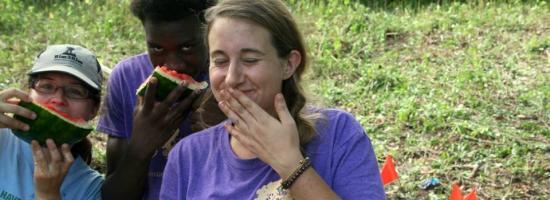
"De-Vining"
De-Vining and Natural Area Management
“De-vining” is when trained volunteers cut non-native vines that strangle and outcompete trees. This work restores forest health. We cut non-native vines such as bittersweet and honeysuckle, invasive shrubs such as multiflora rose, and other plants that enable vine growth. This initiative is why you might see pink tape in natural areas–the tape marks young trees that we want to protect when de-vining. Don’t worry, the tape is biodegradable!



URI has developed several tools to support this work including:
- de-vining fact sheet
- invasive species fact sheets and signs to help identify plants to be removed;
- informational signs to help explain that pink tape is used to signify plants that should be protected; and
- the videos embedded below (and in this YouTube playlist) to educate the public about the how, when, what, where, and why of “de-vining.”
Please email uri@yale.edu or call 203-432-6189 if you have any questions.
De-Vining Videos
Watch this de-vining introductory presentation by Chris Ozyck in February 2024 at the East Rock Park Trowbridge Environmental Center.
Chris Ozyck led this outdoor workshop in February 2025 at the invitation of the West River Watershed Coalition.
This short video is part of a series of videos Chris Ozyck recorded in celebration of the 50th Earth Day. Each day for 50 days in spring 2020 Chris shared one environmental tip. Of all 50 videos, this is the most watched.
Plant ID can be challenging, especially in winter! This short video recorded by former URI staffer Matt Viens will help you identify some of the vines you are most likely to encounter in forests in and around New Haven county.
Natural Areas Management and Oak Regeneration
URI is collaborating with the Hixon Center for Urban Sustainability on a research project that aims to understand the survival challenges faced by urban oak trees. Our findings are included in the fact sheet below, which describes the urban stressors for oak trees, factors that enable oak trees to regenerate in cities, and how best management practices can be carried out. Research is ongoing, so stay tuned for more.
Click here to access the fact sheet about supporting oak tree growth in cities.

